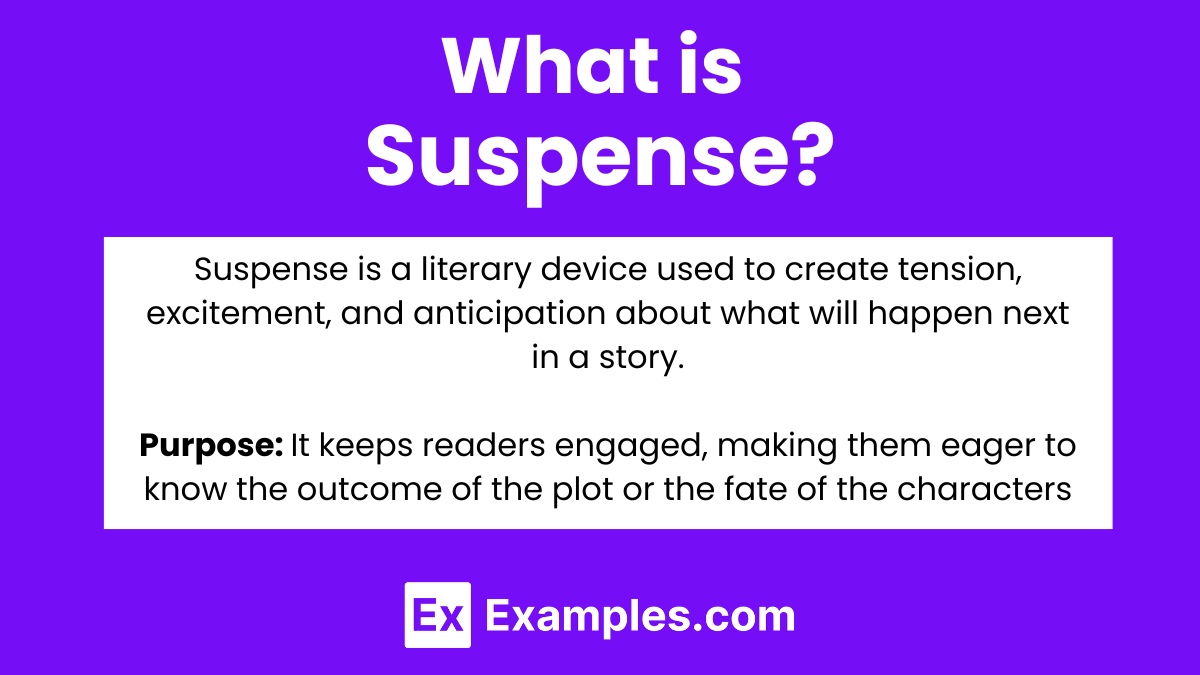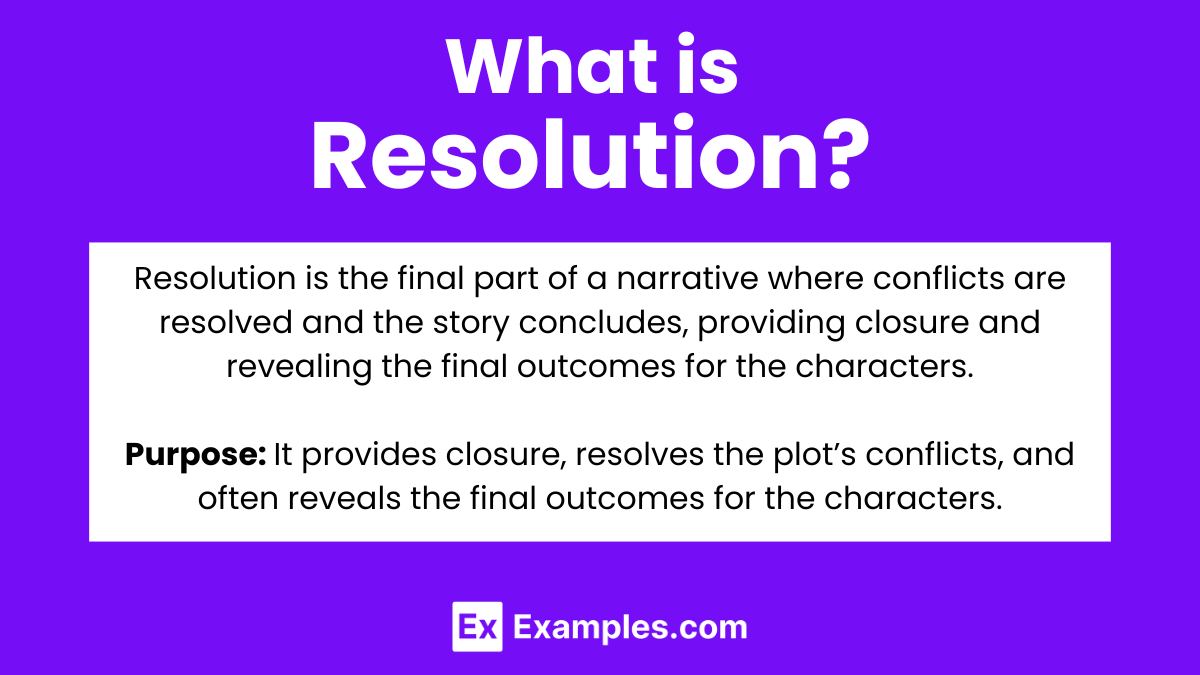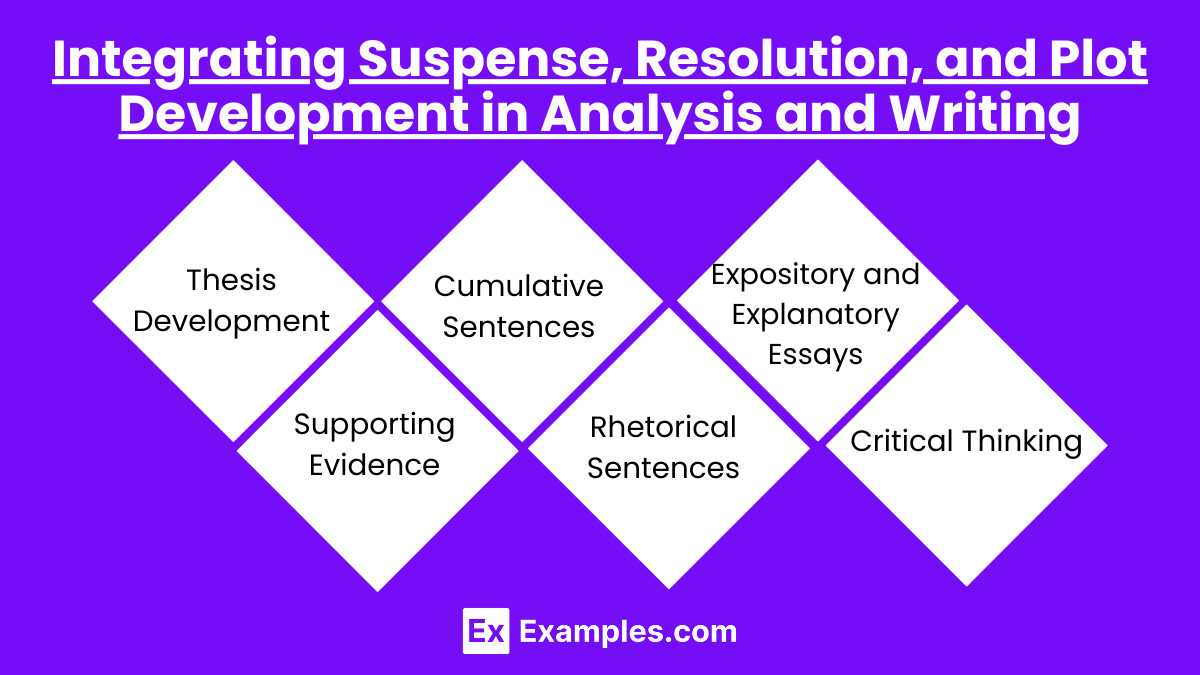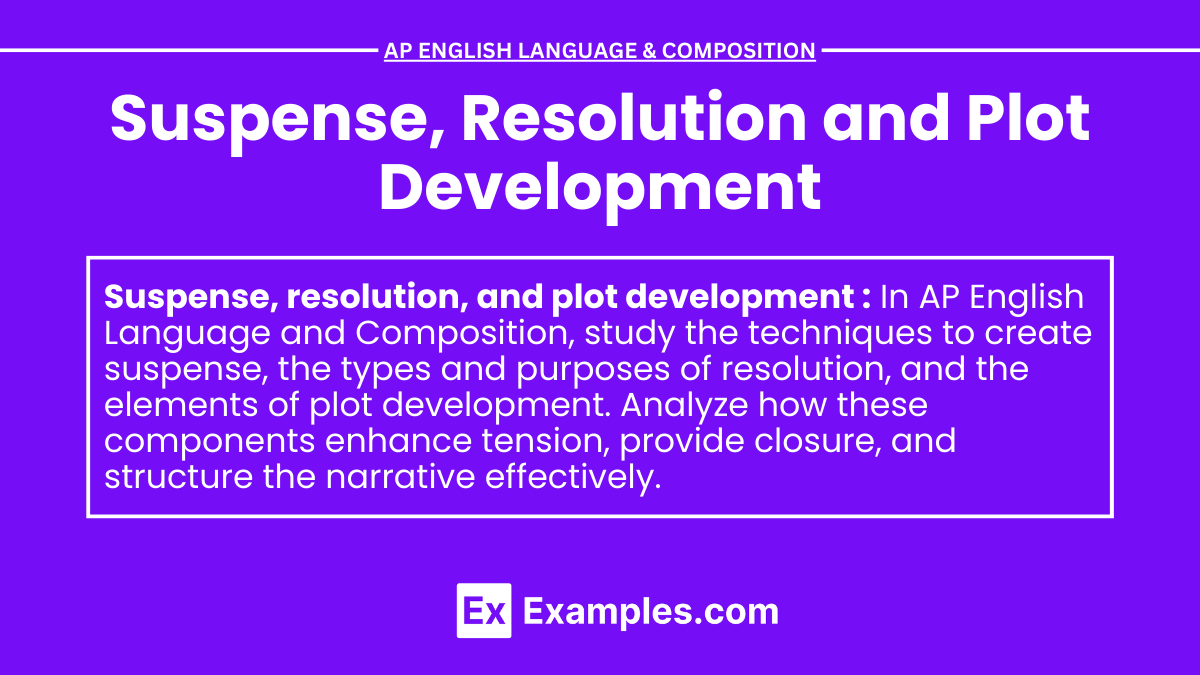In AP English Language and Composition, mastering the elements of suspense, resolution, and plot development is essential for crafting engaging rhetorical sentences and cumulative sentences that enhance both argumentative speech and argumentative writing. These narrative techniques are crucial for creating tension, providing closure, and structuring stories in a way that captivates readers. By analyzing how authors build suspense, resolve conflicts, and develop plots, students can deepen their understanding of literary techniques and produce well-supported, persuasive essays that demonstrate a sophisticated grasp of narrative structure, crucial for excelling in the AP exam.
Learning Objectives
The learning objectives for mastering suspense, resolution, and plot development in AP English Language and Composition include using cumulative sentences to add depth to analyses, crafting clear explanatory essays and expository essays that explore these narrative elements, employing rhetorical sentences to enhance persuasive writing, developing a strong final thesis statement that encapsulates the analysis of these elements, and applying critical thinking to evaluate and interpret the effectiveness of suspense, resolution, and plot development in literature.
Suspense

- Definition: Suspense is a literary device used to create tension, excitement, and anticipation about what will happen next in a story.
- Purpose: It keeps readers engaged, making them eager to know the outcome of the plot or the fate of the characters.
- Techniques to Create Suspense:
- Foreshadowing: Hinting at events to come.
- Example: In “Romeo and Juliet,” Shakespeare foreshadows the tragic end through ominous statements.
- Pacing: Controlling the speed at which the story unfolds.
- Example: Short, quick sentences can increase the pace and heighten suspense.
- Cliffhangers: Ending chapters or scenes at a crucial moment.
- Example: At the end of a chapter in a mystery novel, a detective discovers a crucial clue.
- Red Herrings: Introducing misleading or distracting information.
- Example: In detective stories, an innocent character may be presented as suspicious.
- Foreshadowing: Hinting at events to come.
- Examples in Literature:
- “The Tell-Tale Heart” by Edgar Allan Poe: The narrator’s growing paranoia and the constant beating of the heart build suspense.
- “The Hunger Games” by Suzanne Collins: The deadly competition and constant threats keep readers on edge.
Resolution

- Definition: The resolution, or denouement, is the final part of a narrative where conflicts are resolved, and the story concludes.
- Purpose: It provides closure, resolves the plot’s conflicts, and often reveals the final outcomes for the characters.
- Types of Resolutions:
- Happy Resolution: Conflicts are resolved positively.
- Example: In “Pride and Prejudice,” Elizabeth and Darcy overcome their misunderstandings and marry.
- Tragic Resolution: Ends with a negative outcome or loss.
- Example: In “Macbeth,” the protagonist’s ambition leads to his downfall and death.
- Ambiguous Resolution: Leaves some questions unanswered, allowing for multiple interpretations.
- Example: In “The Road,” the fate of the boy is left open-ended.
- Happy Resolution: Conflicts are resolved positively.
- Analyzing Resolution:
- Character Development: How do characters change by the end of the story?
- Theme Reinforcement: How does the resolution underscore the story’s central themes?
- Narrative Closure: Does the resolution provide a satisfying conclusion?
Plot Development

- Definition: Plot development refers to how the sequence of events in a story unfolds and builds towards a climax and resolution.
- Purpose: To structure the story in a way that maintains interest and builds emotional and thematic depth.
- Elements of Plot Development:
- Exposition: Introduces background information, characters, and setting.
- Example: In “Harry Potter and the Sorcerer’s Stone,” the exposition introduces Harry’s life with the Dursleys and his discovery of being a wizard.
- Rising Action: Series of events that build tension and lead to the climax.
- Example: In “The Great Gatsby,” Gatsby’s parties and his pursuit of Daisy build towards the climax.
- Climax: The turning point or most intense moment.
- Example: In “To Kill a Mockingbird,” the trial of Tom Robinson is the climax.
- Falling Action: Events that follow the climax and lead to the resolution.
- Example: After Tom Robinson’s trial, the events leading to Bob Ewell’s attack on Scout and Jem.
- Resolution: The conclusion where conflicts are resolved.
- Example: In “The Catcher in the Rye,” Holden’s acceptance of his situation marks the resolution.
- Exposition: Introduces background information, characters, and setting.
- Techniques for Effective Plot Development:
- Conflict Introduction: Presenting problems or challenges for the characters.
- Character Arcs: Showing how characters grow and change.
- Subplots: Secondary storylines that support the main plot.
- Foreshadowing: Providing hints of what is to come.
- Flashbacks: Revealing important backstory.
Integrating Suspense, Resolution, and Plot Development in Analysis and Writing

- Thesis Development:
- Example: “In ‘The Great Gatsby,’ Fitzgerald masterfully builds suspense through foreshadowing and pacing, culminating in a tragic resolution that underscores the emptiness of the American Dream.”
- Supporting Evidence:
- Use quotations and detailed examples from the text to illustrate points about suspense, resolution, and plot development.
- Example: “The green light at the end of Daisy’s dock is a persistent symbol of Gatsby’s unreachable dreams, building suspense throughout the novel.”
- Cumulative Sentences:
- Employ cumulative sentences to add depth and detail to your analysis.
- Example: “As the story progresses, Gatsby’s fixation on the green light, combined with his mysterious past and grand parties, creates an ever-increasing sense of suspense and anticipation.”
- Rhetorical Sentences:
- Use rhetorical sentences to emphasize key points and enhance persuasiveness.
- Example: “How does the resolution of ‘1984’ leave readers feeling? Orwell’s grim conclusion reinforces the terrifying reality of totalitarian control.”
- Expository and Explanatory Essays:
- Structure essays to clearly explain how suspense, resolution, and plot development function in the narrative.
- Example: An expository essay on “The Road” could explore how McCarthy’s use of a bleak, uncertain resolution enhances the themes of survival and hope.
- Critical Thinking:
- Apply critical thinking to evaluate how effectively the author uses these elements to enhance the story.
- Example: Analyze how the pacing of events in “The Hunger Games” maintains suspense and keeps readers engaged.


